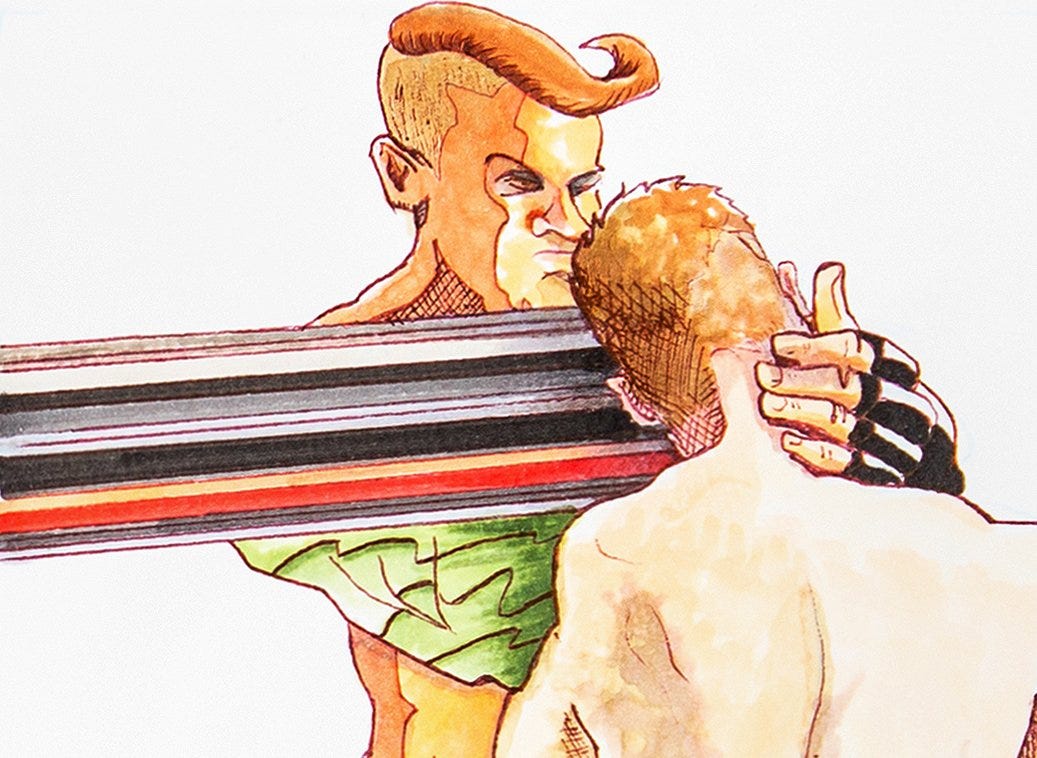UFC 291 Technical Breakdown: Did Justin Gaethje Actually Set Up His High Kick?
Sure Justin Gaethje got an instant classic finish for his highlight reel at UFC 291, but how did he do it?
UFC 291 saw the promotion return to Salt Lake City a year after the sound of a last-minute Leon Edwards' head kick reverberated through the Delta Center. This time, like a delayed echo, the night was punctuated by another thunderous head kick.
Denver-based trainer Trevor Whitman once again sat cage side as one of his protégés traded blows, but this time his fighter remained upright as the opposing fighter toppled over like a statue.
A rematch between Justin Gaethje and Dustin Poirier seemed like an inevitability after the two engaged in an unforgettable main event brawl in April of 2018, but despite both fighters' subsequent ascensions to the top of the lightweight division, it took five years for the UFC 291 rematch to materialize.
In that time Gaethje and Poirier were given a pair of title shots each, but were submitted by Khabib Nurmagomedov and Charles Oliveira in sequence.
Nevertheless, Gaethje and Poirier have been characterized by their abilities to take losses well and both continued to hone their craft and hope for a third opportunity at the belt. It was those stylistic adjustments that changed the nature of the rematch and led to a very different fight in their second outing.
UFC 291 Saw The New Gaethje Debut
When Justin Gaethje arrived in the UFC he was perhaps the most relentless pressure fighter ever seen in MMA. Constant forward movement and a steady stream of powerful low kicks ensured that no opponent had an easy night in the octagon with him. However, after running into two competent backfoot boxers, Eddie Alvarez and Dustin Poirier, who were happy to meet his fire with fire and left him with his first two professional losses, both by knockout, Gaethje finally capitulated to the wishes of his longtime trainer Trevor Whitman and began to adjust his style.
In the years since losing to Poirier, Gaethje has become somewhat of an out-fighter, preferring to circle at range and allow his opponents to be the one coming forward. Attempts to tighten up his defense combined with evasive footwork allowed him to set up opportunities to use his thudding power to counter. The result of this is that the directionality of the fight with Poirier was completely reversed from their first encounter, and now Poirier looked like the pressure fighter and Gaethje the backfoot boxer.
Gaethje didn't abandon his leg kicks at UFC 291, but instead incorporated them into his new approach. They were an important weapon against Poirier in the first fight, so Gaethje came into the rematch looking to punish the lead leg of his southpaw opponent.
Poirier is primarily a boxer, especially as repeated hip injuries have made it harder for him to properly rotate his hips to generate power in his kicks. But this means that he tends to be heavy on his front foot, which made it more difficult for him to defend Gaethje's low kicks and made the kicks more effective for Gaethje when they landed.
The leg kicks are what ties the old Gaethje to the new. It's easy to imagine that changing his style would not have been a trivial mental task. Typically styles stem from innate personality traits that define what a fighter likes to be doing in a fight.
It's likely that Gaethje was a relentless pressure fighter because he liked to break down his opponents. Attrition may have been at the heart of what has always driven Gaethje's approach, so finding ways to continually wear his opponent down even when he's on the backfoot probably helps to make him feel like he's still being himself even with his new style.
Poirier's Adjustments
Poirier's response to the kicking threat of Gaethje at UFC 291 was to bring weapons of his own that he could use to compete at that range. It would have been nice to see him try to pair this with a commitment to checking and blocking kicks, but being unwilling to concede a given phase or range of fighting goes a long way towards surviving when your opponent has you outgunned in a specific area. Even if he couldn't take the low kicks away from Gaethje, he could at least try to convince him that he wasn't free to hang out at kicking range all night.
Rather than low kicks, Poirier's kick offense was in the form of open side body kicks. The southpaw-orthodox matchup opens up the rear kick to the liver and gave Poirier his own means of attrition that would prevent the fight from snowballing for Gaethje in the later rounds at UFC 291.
As Poirier looked to land these kicks, it became immediately apparent to both him and his corner that Gaethje was ducking into the kicks and blocking with both arms. The natural response was for Poirier to attempt to throw a high kick that could catch Gaethje ducking, but his poor kicking form reduced his ability to capitalize on this opening.
Gaethje's tendency to dip to his right was not just a reaction to the kicks, but a common response to a variety of threats…
Keep reading with a 7-day free trial
Subscribe to The MMA Draw Newsletter to keep reading this post and get 7 days of free access to the full post archives.




